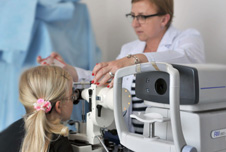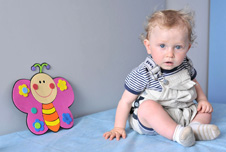Pulmonology Clinic
Reception:
In person: 8:00 am to 7:00 pm
By phone:
National Health Fund Visits +48 12 413 00 99
Paid Fund +48 606 445 411
The following data is required to make an appointment:
- Full address with postal code,
- Patient PESEL [ID] number,
- Referral data (service provider code or REGON, or the 7th and 8th part of the department code, Referring doctor’s License No., Referral date).
Consultations:
At the first visit, please provide test results, information on your child's previous illness and their Child Health Record book.
- As part of the National Health Fund for children and adolescents up to 18 years old – with a referral,
- Paid consultation – without referral.
Doctors at the Clinic:
- Beata Kruk, MD – Paediatrician, pulmonologist, allergy specialist,
- Agata Świerczek, MD – Paediatrician, pulmonology specialist, allergy specialist,
- Marta Stępień, MD – Paediatric specialist, pulmonologist.
We provide the following services:
- Pulmonary function testing with use of the LUNG TEST 1000S and LUNG TEST 250,
- Skin and patch tests,
- Specific immunotherapy treatments under an anesthetist,
- Inhalation tests.
SPIROMETRY
This is a medical test to measure the volume and capacity of the lungs and the airflow in the lungs and bronchi in various phases of the respiratory cycle. Spirometry is designed to determine respiratory ventilation reserves. Spirometry tests are done using a device called a spirometer. Spirometry requires the patient’s cooperation with the operator. It lasts a few minutes and can be repeated many times. Indications for spirometry are:
- Diagnosis of ventilation disorders and assessment of their severity,
- Monitoring of disease, treatment effects and physical rehabilitation,
- Assessment for disability benefits,
- Assessment of the effects of harmful working conditions or environments,
- Preparation for surgery.
What happens in a spirometry test?
The patient reports after a light meal, in comfortable clothes that are not tight. The patient reports after a light meal, in comfortable clothes that are not tight.
Proper spirometry is only possible if the patient follows the operator’s instructions. During the test, the patient sits or stands up straight, gripping a disposable plastic mouthpiece in their mouth. Their nose is gently clipped shut to prevent breathing through the nose. The patient begins the test by taking a few calm breaths, then slowly takes the deepest breath they can, then exhales as hard as possible, for as long as possible.
The spirometry results are provided upon completion of the test.


